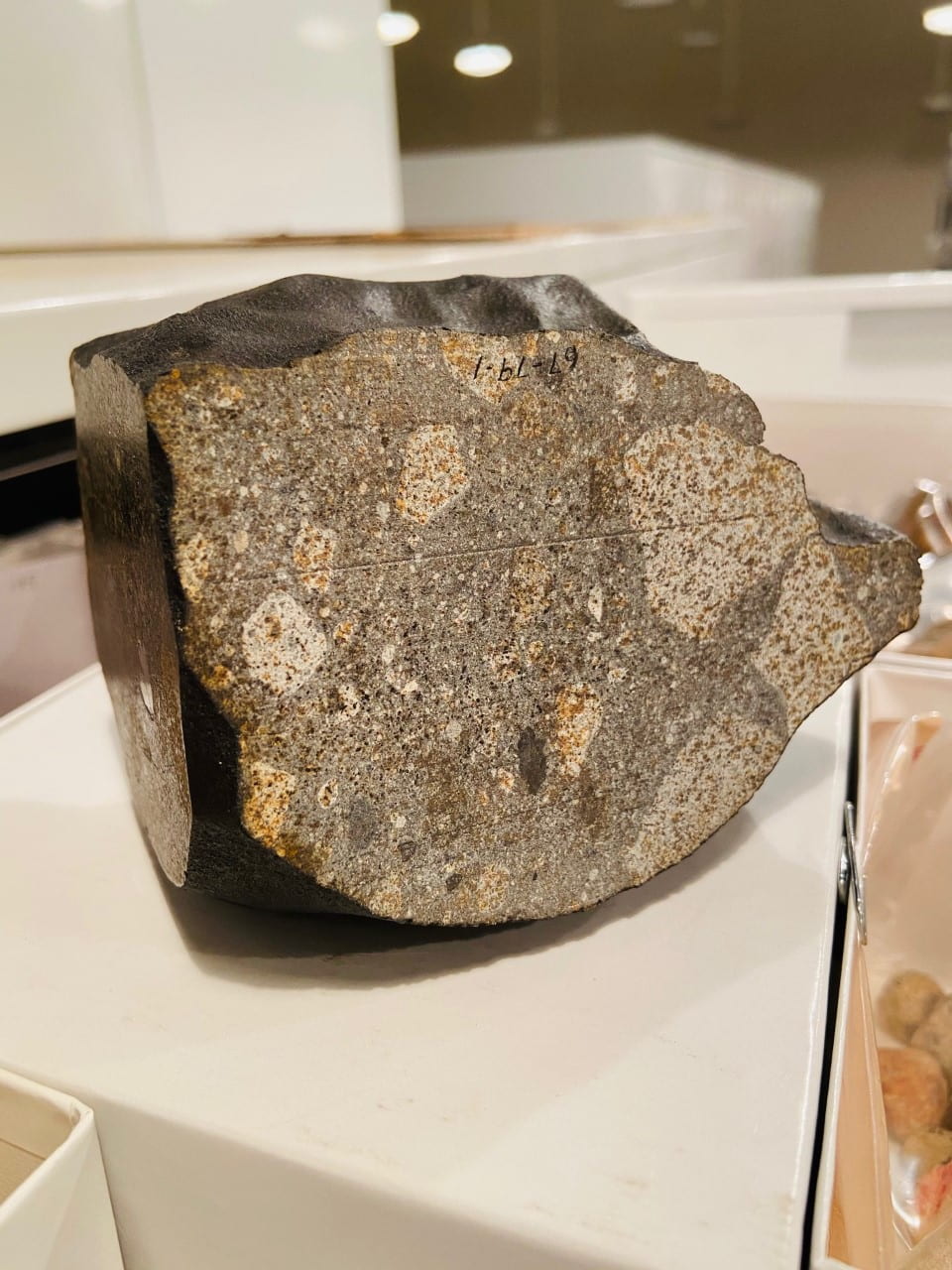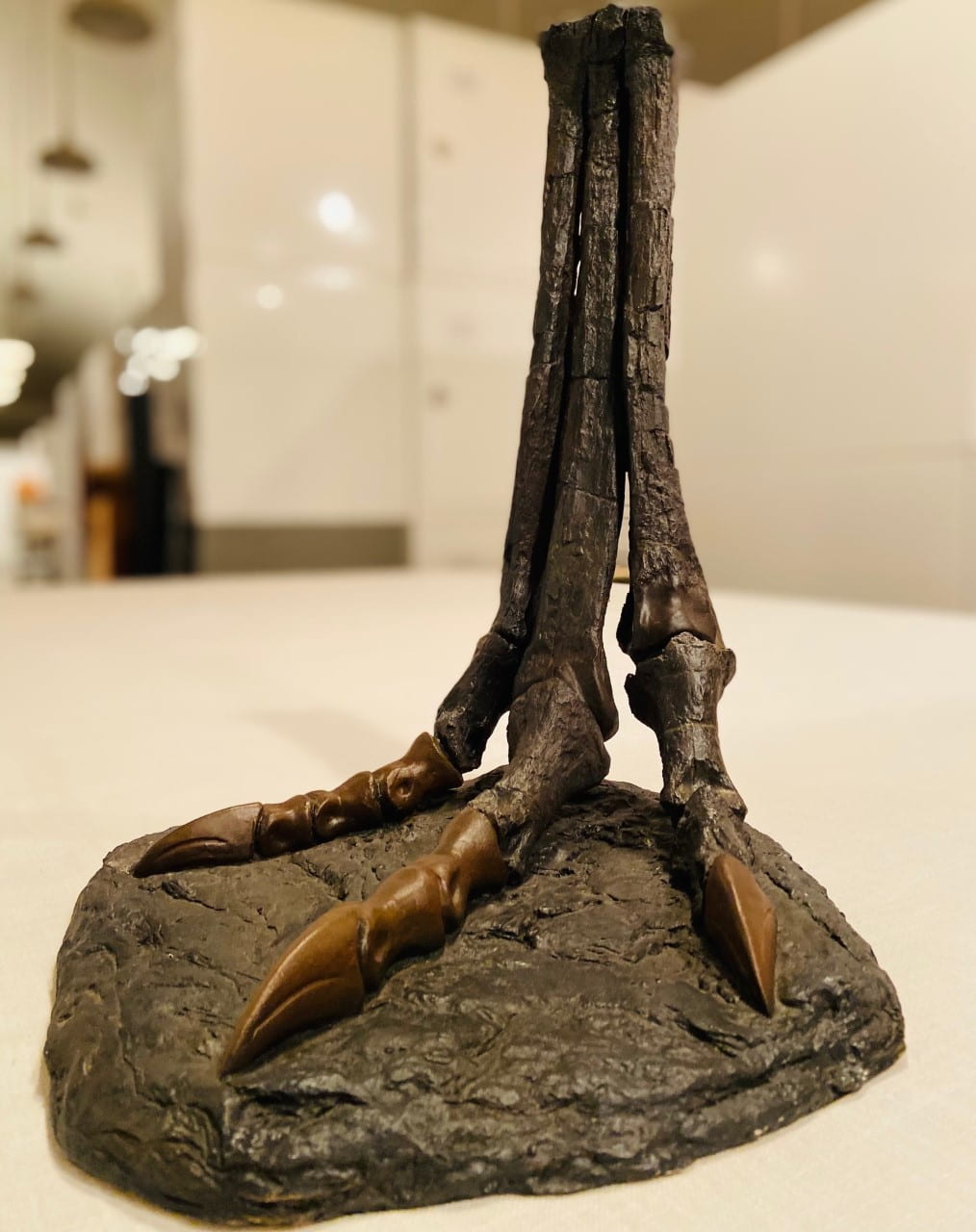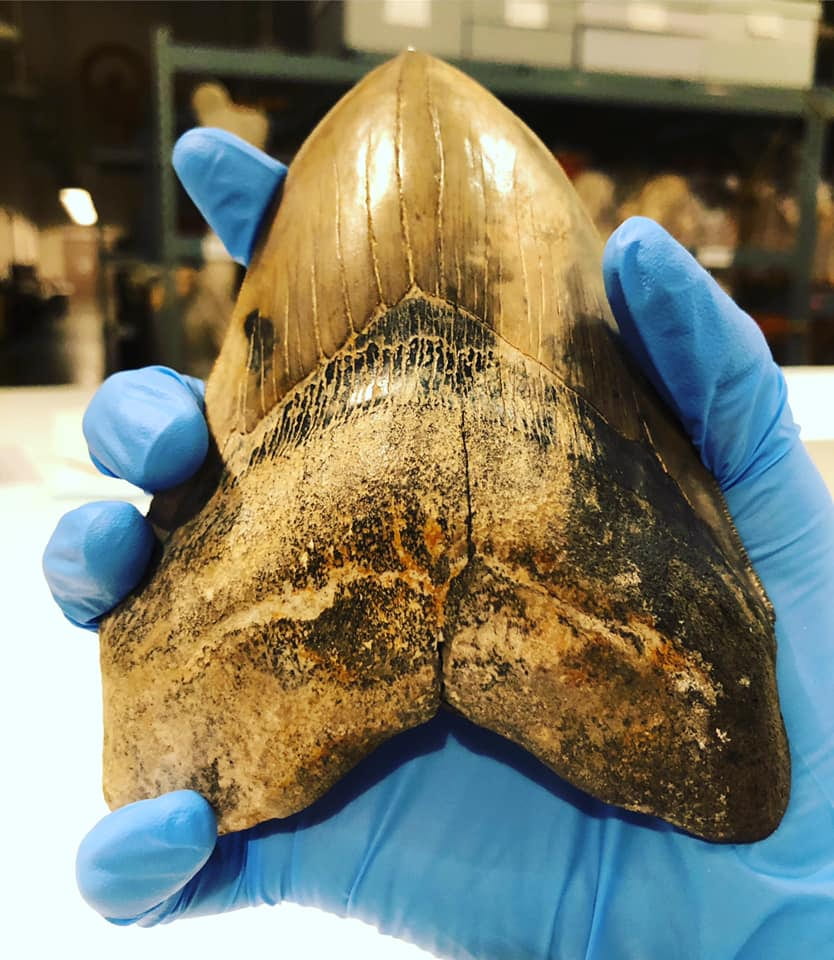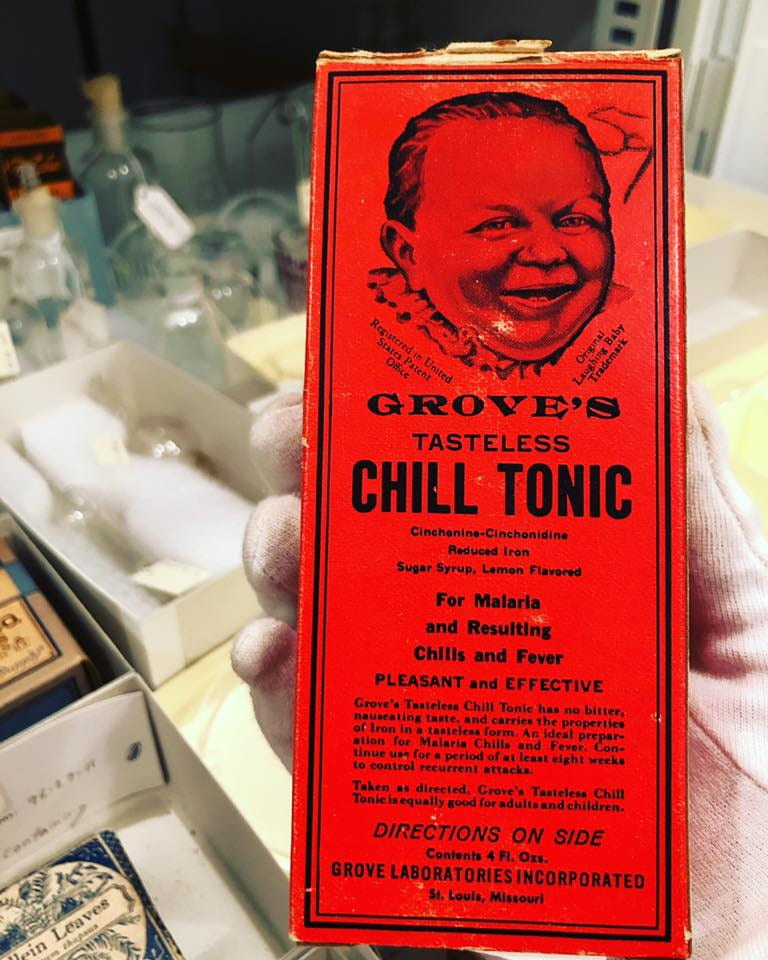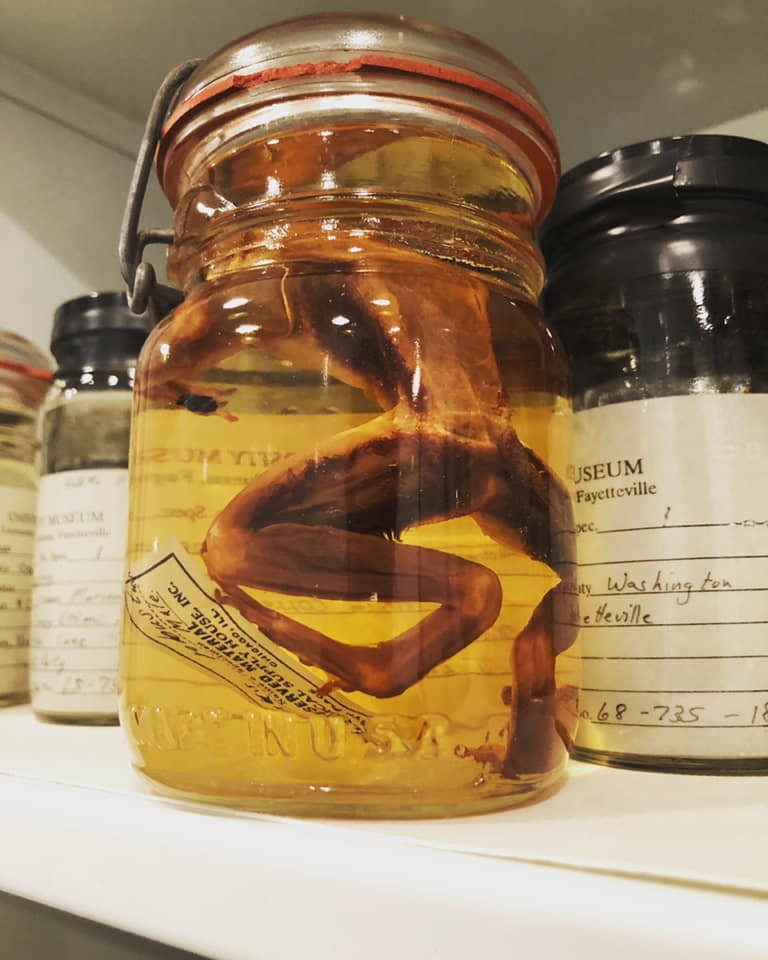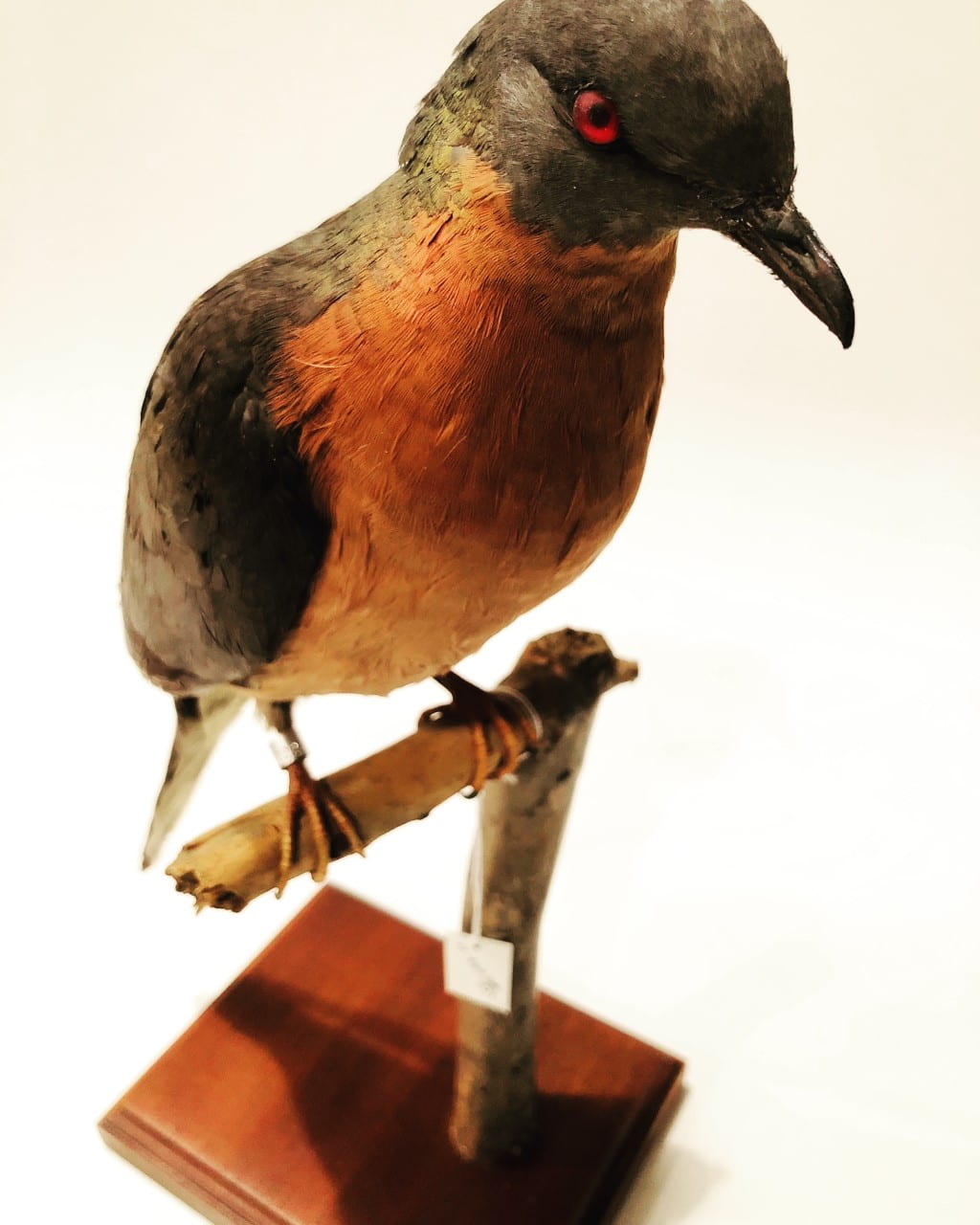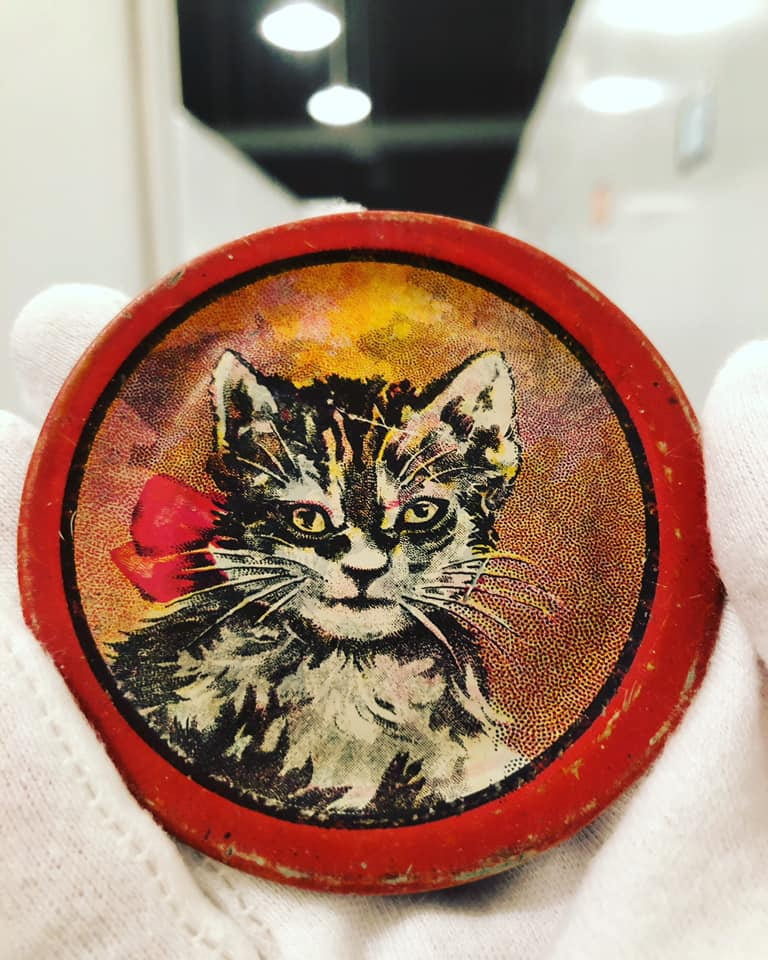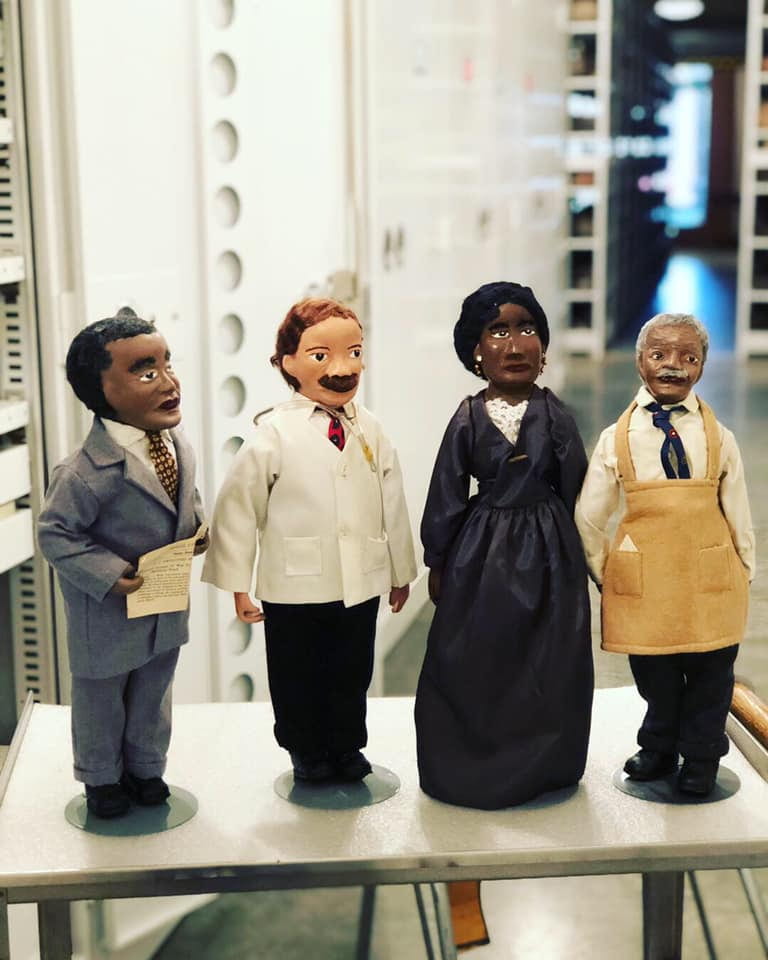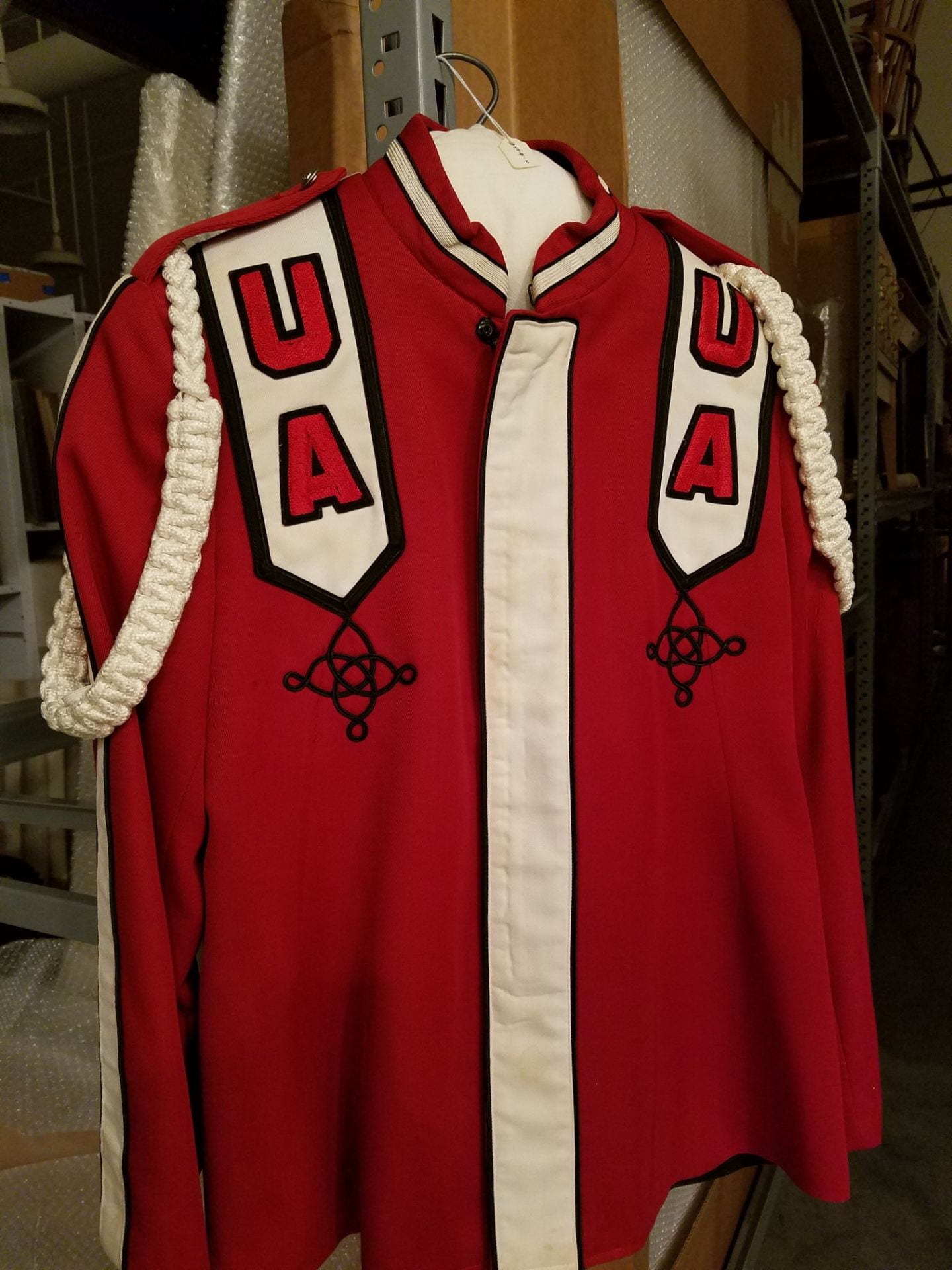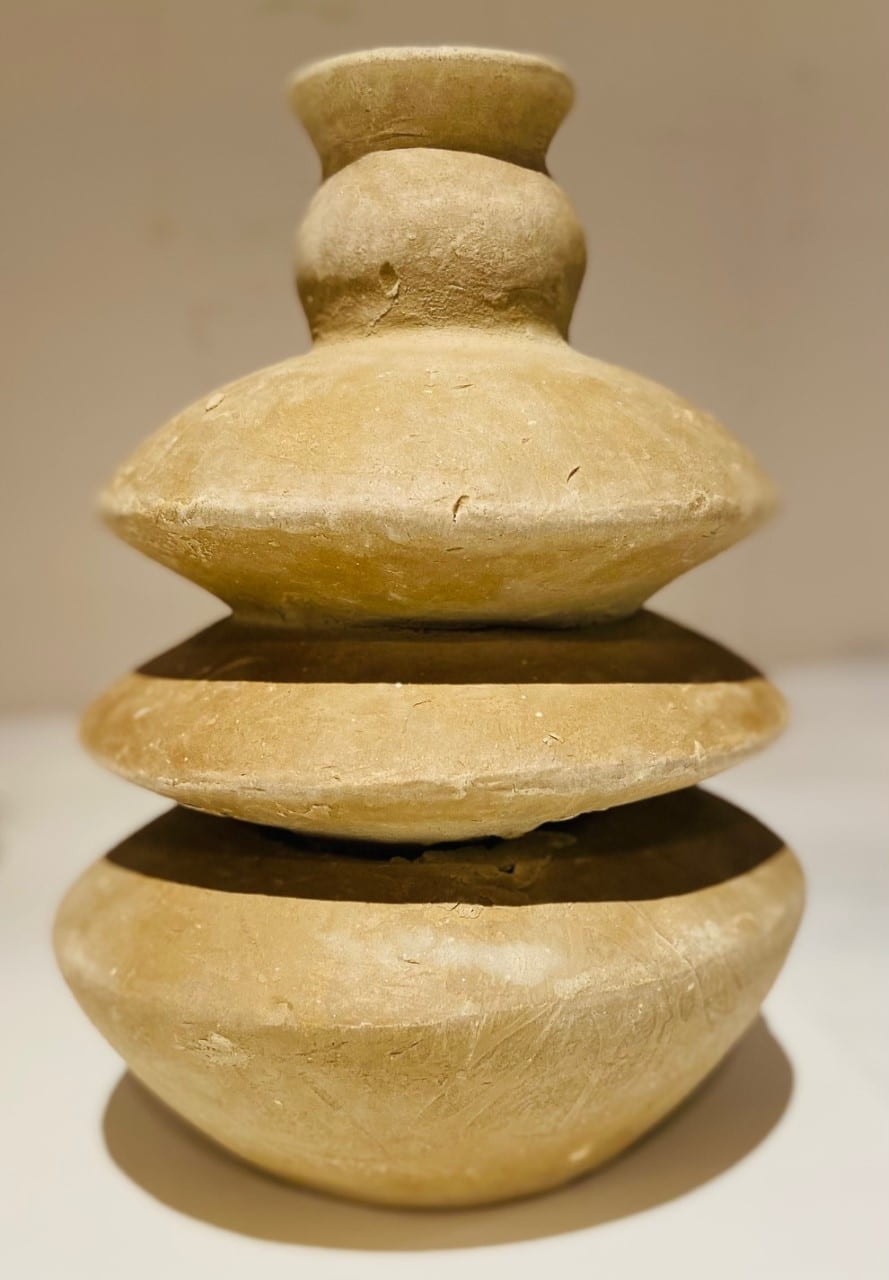Highlights of the
Museum Collections
Introduction
From a ~4.5 billion-year-old meteorite to a work of art from the 1990s, the Museum houses a wide array of materials from across space and time. This variety was first explored through a scavenger hunt around the University of Arkansas-Fayetteville main campus in spring 2021. The original scavenger hunt page remains so visitors can continue to learn about this special selection of highlights within the Museum’s collections.
~4.5 Billion Years Ago
Fayetteville Meteorite
The Fayetteville Meteorite fell to Earth just before noon on December 26th, 1934, near Fayetteville, Arkansas. Two locals by the name of Pearl Conley and Ray Brisco were out cutting wood at the time when they heard an explosion – the meteorite. They recovered it soon after.
It weighed five pounds upon impact, but since then small samples have been taken from it for scientific study. It is one of only 15 verified recovered meteorites found in the state of Arkansas.
113 Million Years Ago
In 1972, Joe B. Friday discovered the fossil remains of a nearly complete dinosaur foot on his land near Lockesburg in southwestern Arkansas.
It was donated to the U of A Museum in 1974.
It is currently the only body fossil of a dinosaur found and scientifically described in the state of Arkansas.
23 – 3.6 Million Years Ago
Also known as Otodus megalodon, the megalodon is the largest shark in history. It has been extinct for millions of years (despite what all the fun movies might say!).
The size of adults is still debated, but they could reach approximately three times the length of a great white shark today. A big reason why their size is still debated has to do with their skeleton. Like other elasmobranches today, megalodon skeletons were primarily cartilage rather than bone. The former, unfortunately, does not fossilize well so skeletal evidence is lacking beyond teeth, vertebrae, and coprolite.
Extinct ~10,000 Years Ago
Columbian Mammoth
This entry’s photograph features the skull of a Columbian mammoth. It was discovered near Hazen, Arkansas in May 1965 during road construction. Columbian mammoths were widely distributed in southeast North America during the late part of the Pleistocene Epoch.
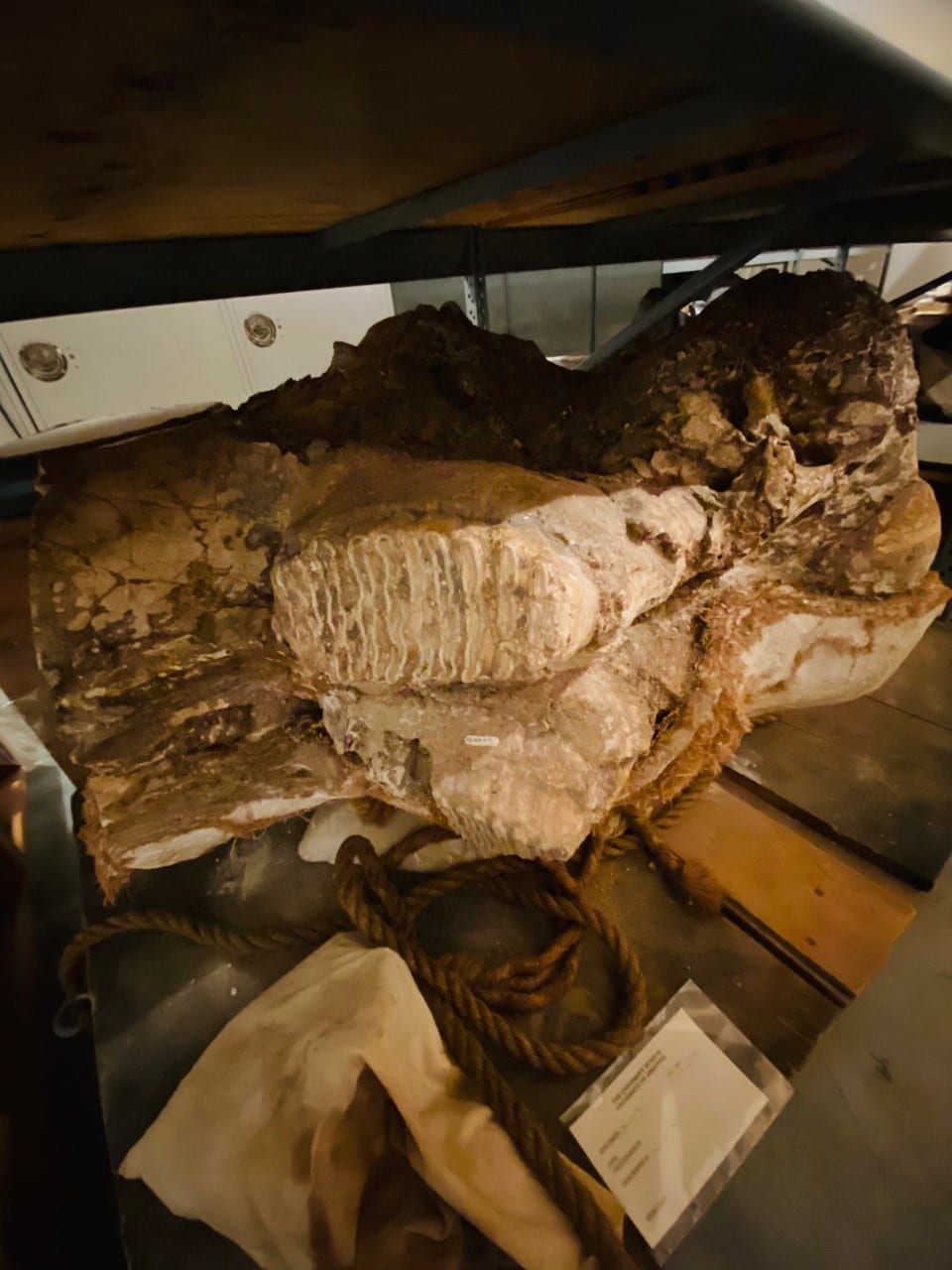
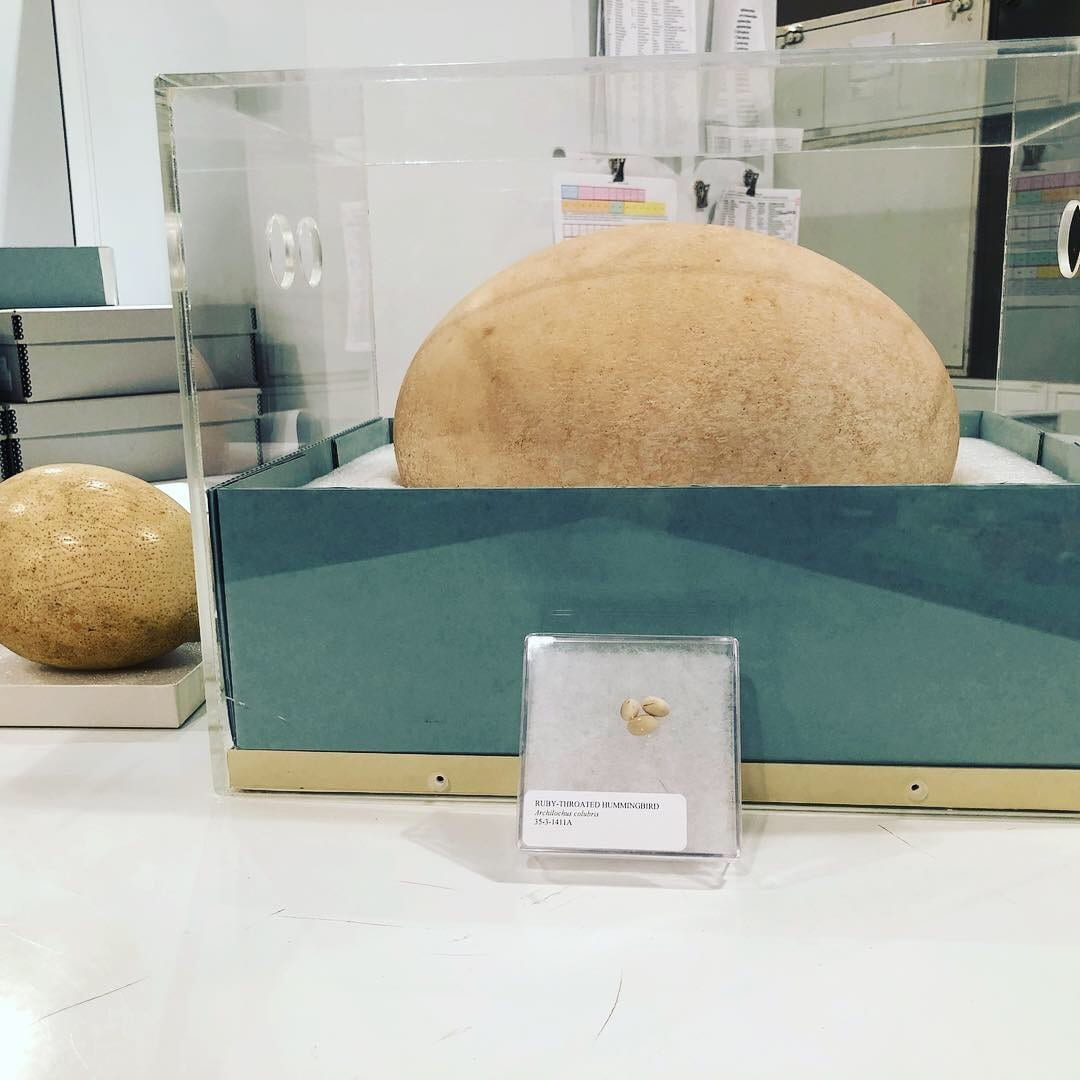
Mid-19th Century
This image is part of an album of Japanese woodblock prints. Most of the prints are attributed to one of the late print masters of the Edo period (1603-1868), Utagawa Kuniyoshi (1798-1861). Kuniyoshi separated himself from other artists in his choice of subject matter, creating pieces that celebrated warriors, entertainers, and cats.
Many of Kuniyoshi’s prints are diptychs or triptychs. The diptychs in this collector’s album include two pages, while the triptychs require an extra page that folds out.
1880s
Grove’s Tasteless Chill Tonic was unveiled in the 1880s and remained a household name for many years.
The tonic was used to treat malaria, which was still prevalent in the southeast US by the mid-20th century. The CDC, in fact, originally started in 1942 as the Office of Malaria Control in War Areas. The agency was created to curb malaria in the southeast US during World War II. That is also why the CDC is located in Atlanta, GA, rather than Washington, DC – it was originally placed in the region where the most transmission was occurring.
Malaria was considered eliminated from the US in 1951 but remains a major center of activity for the CDC today.
1900
The Hairy Frog, or Trichobatrachus robustus, were first identified in 1900 and are found in Cameroon, Equatorial Guinea, Gabon and Nigeria. Males produce hair-like structures (or papillae) on their body during breeding season.
Hairy Frogs are sometimes referred to as Wolverine Frogs because they push claws out of their toes when threatened.
1914
A museum (like ours) is about the only place you’ll find one of these birds today. Here’s why:
This is a passenger pigeon. They were once the most abundant birds in North America. Their flocks had millions and could darken the sky for hours.
In the 1800s, unprecedented hunting of the birds occurred because people believed their numbers were inexhaustible. The last passenger pigeon died in a zoo in 1914. It was immediately sent off to the Smithsonian to be preserved for future generations like us.
Numerous other birds went extinct in the late 1800s due to excess hunting. In response, one of the earliest wildlife protection laws was passed – the U.S. Migratory Bird Treaty Act of 1918.
1927
Cat Plate
This toy plate was purchased from a Woolworth’s store located at Fayetteville Square, ca. 1927. The first Woolworth’s opened in 1879 in Utica, NY. The company introduced an early example of the five-and-dime store concept.
1957
First Computer on U of A Campus
Painted a dashing teal color, this is the first computer on University of Arkansas campus.
When acquired by the Animal Science Department in 1957 to crunch numbers related to cattle research, there was some doubt about the future of computers. However, as we all can attest, it turned out to be a worthy investment for the U of A and one that has withstood the test of time.
1971 – 1977
Starting in the 1960s, I. Roberta Bell, a Chicago school teacher, created a set of 26 dolls to help teach African American history to her students. Each doll was created in the likeness of African Americans who made significant contributions to history. A limited number of copies of the dolls were made over the years.
Their heads and hands were shaped from porcelain clay and skin colors baked into it using a kiln. Faces were hand-painted and wigs of mohair adorn them. The bodies are filled with saw dust. Some dolls took longer than others to make. For instance, creating Harriet Tubman’s head took less than a week while Frederick Douglass’s head took one year. Individuals featured here are (L-R): Solon C. Bell, Dr. Daniel Hale Williams, Elizabeth Keckley, and Dr. George Washington Carver.
In 1970, Bell became the first African American to join the National Institute of American Doll Artists.
1970s – 1980s
Featured is a University of Arkansas Razorback Band uniform donated by Director of Bands, Eldon Janzen. Hired in 1970, Janzen was the Director for 25 years. Under his leadership, the marching band more than doubled its members and they appeared in the most bowl games in the program’s history.
Throughout his career, Janzen left his stamp on this campus and the bandmaster’s community. In 1998, he was named Lifetime President of the Arkansas Bandmasters Association and was a recipient of the Distinguished Service citation by Lambda Chapter – Kappa Kappa Psi.
Early 1990s
Anna Mitchell Ceramic
Anna Mitchell (1926 – 2012) was a member of the Cherokee Nation. She was named a Cherokee National Living Treasure in the art of pottery in 1988, having almost single-handedly revived the hand-made tradition among the Oklahoma Cherokee.
She believed her talent was God-given and happily shared her pottery techniques. Mitchell’s works incorporate southeastern ancestral pottery traditions of the Cherokee, Creek, Quapaw, Tunica, and Caddo peoples.
